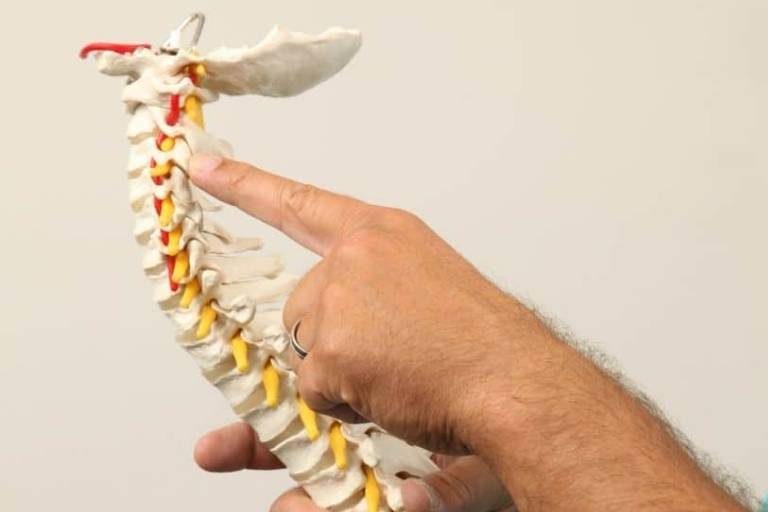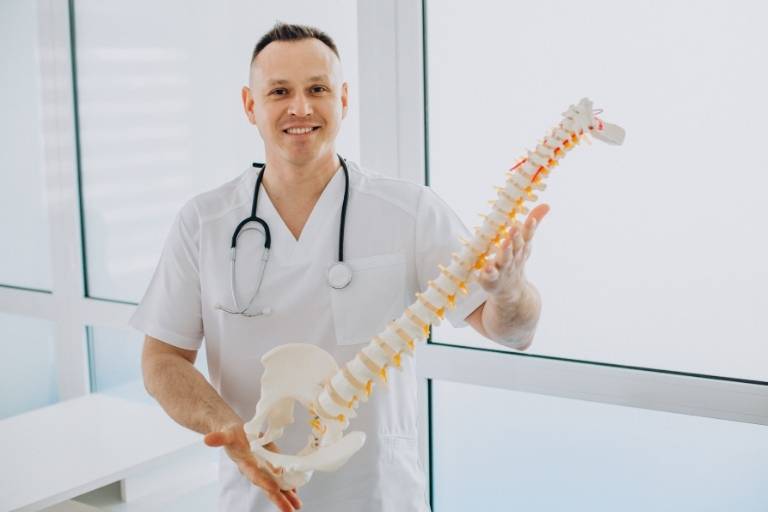A chiropractic adjustment is a gentle hands-on movement of a joint or spinal segment (vertebra), using parts of the vertebra or bone as levers to move the joint and take pressure off the affected nerve roots, sometimes called “pinched nerves.” While Chiropractors may also work with the cranium and extremity joints, the spine and spinal cord are their primary focus.
A “full-body adjustment” may be an adjustment to one joint or segment, or it could entail adjusting both the full spine and extremities.
Because the spine is part of a fully integrated (and intelligent) system that affects all other systems, organs, and tissues in the body, an adjustment to any part of it will affect the whole body as well. For example, a C1 or Atlas adjustment will affect the whole spinal cord and far-reaching Vagus nerve because of its location at the top of the spine where the spinal cord exits the brain and skull. Some Chiropractors even specialize only in adjusting the upper cervical region.
At Dr. Spine, our Chiropractors will often adjust all parts of the spine, including the hips, extremities, and even the cranium where needed. However, each adjustment is carefully considered and based on complete patient history and examination, not just “cracking the back” to hear a noise so that you think something is happening. Too many such “adjustments” can be both harmful and counterproductive to the patient’s recovery, and may result, short-term, in a loosening of spinal ligaments and spinal instability, although it may temporarily feel good. Long-term, persistent “cracking” can lead to arthritis of the spine and bony growth in and around the affected vertebral joints.
Your spine may be compared to a building or structure with a foundation. If the foundation is not stable or balanced, the building may lean, or develop cracks and eventually give out. At Dr. Spine, we first determine which end of the spine is the most important foundation. Sometimes it involves the upper cervical or cranium. Most of the time, however, your foundation will be based on the stability of the hips or pelvis which, in turn, is affected by your leg length and arches in your feet.
To determine foundation issues, your Chiropractor will request STANDING X-rays to see how gravity affects the hips and spine. Lying (or “sleeping”) X-rays can only show bony or joint pathology, but will not give any information regarding the actual structure and function of the spine and nervous system. Similarly, MRIs are taken lying down and are only useful in determining the extent of spinal cord or disc problems.
NO X-rays or MRIs can tell you whether or not you have pain, a subjective finding unique to each patient. The doctor can only assess the probable causes of your pain or symptoms.
In summary, a full-body adjustment should involve a
- Complete case history of symptoms (Subjective)
- Focused complete physical examination (Objective)
- Trial adjustments, X-rays & MRIs for a full diagnosis (Assessment), and
- Specific Chiropractic adjustments to bring about relief, and restore full health and re-alignment (Procedure).
Your Dr. Spine Chiropractor is best qualified to give you a full-body adjustment, based on your specific needs and health goals.tasse platea dictumst quisque sagittis purus sit amet.






